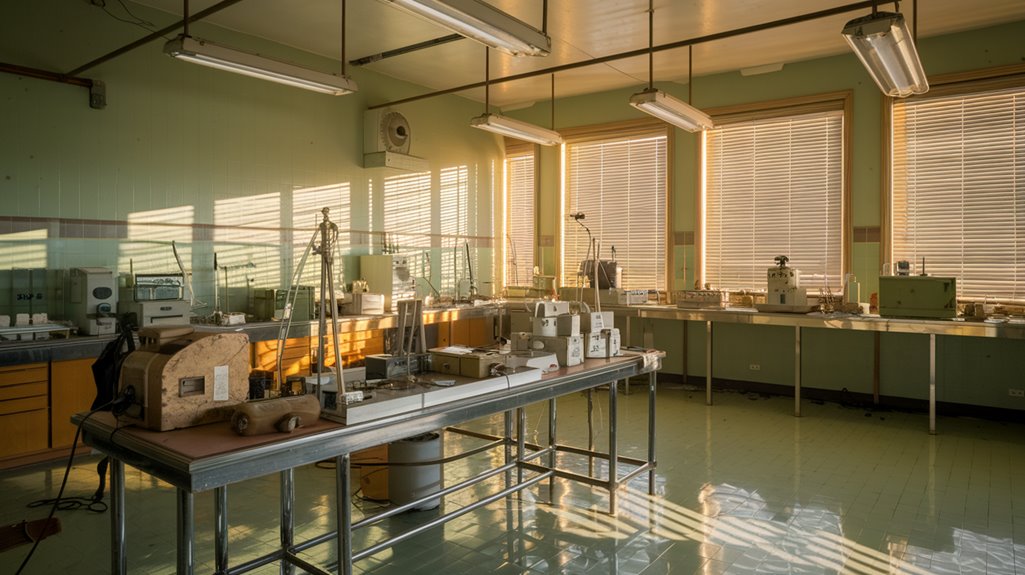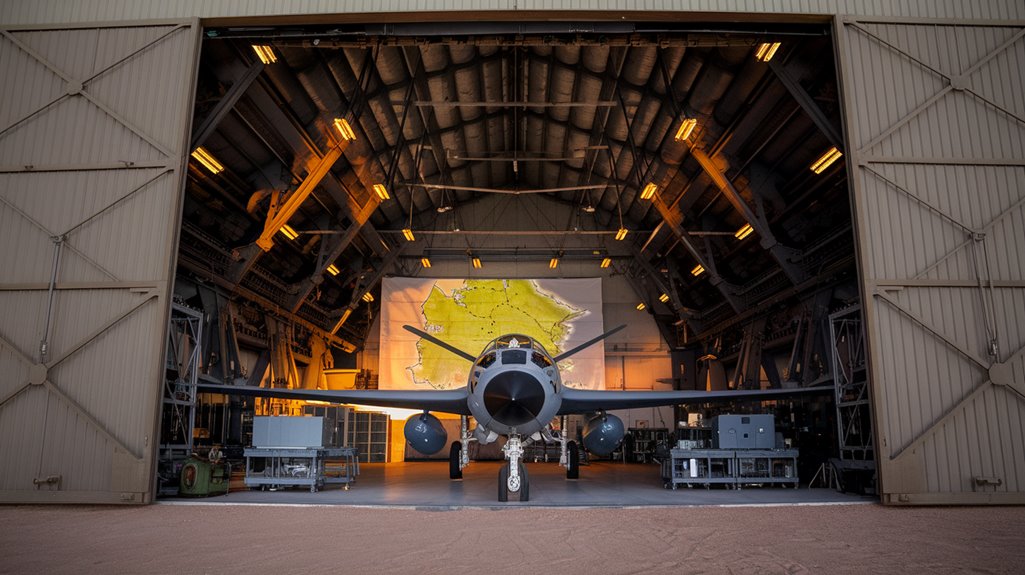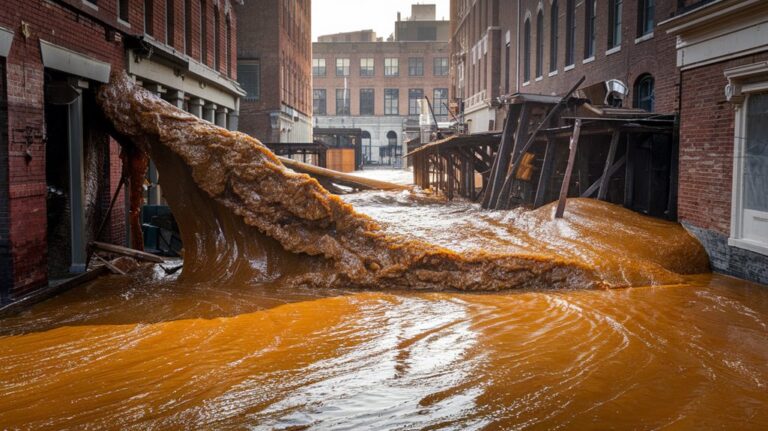Roswell’s Hidden Chapter: The Secret Cold War Project
You've probably heard the UFO stories about Roswell, but there's a far more intriguing reality behind the mystery. When Project Mogul's classified equipment crashed in 1947, it sparked one of the most persistent conspiracy theories in American history. Yet the truth involves cutting-edge Cold War surveillance, Soviet nuclear threats, and a web of government secrecy that would take nearly fifty years to untangle. What you think you know about Roswell isn't even half the story.
The Birth of Project Mogul: America's High-Altitude Spy Program
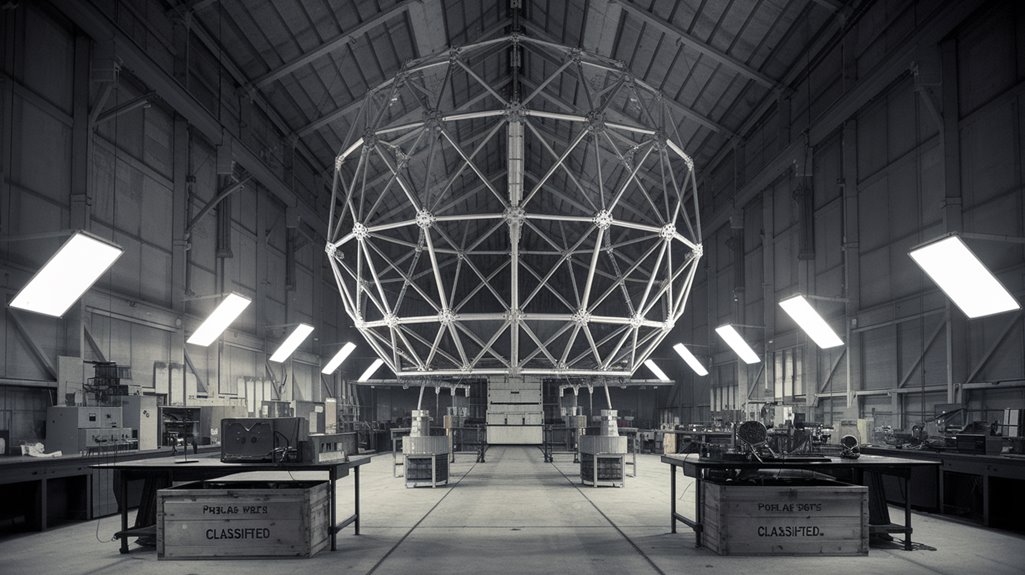
While the world's attention focused on UFO stories surrounding Roswell, the true story began with an ambitious military initiative called Project Mogul.
You might be surprised to learn that this classified program, running from 1947 to 1949, wasn't hunting aliens – it was hunting Soviet atomic bombs.
The project's genius lay in its innovative use of balloon technology and sound detection systems.
Drawing inspiration from ocean acoustics, scientist Maurice Ewing theorized that sound waves from Soviet nuclear tests could be captured in the upper atmosphere.
Under James Peoples' supervision, the military developed massive balloon arrays – each stretching 657 feet tall – equipped with specialized microphones and radio transmitters.
The debris found by Brazel sparked one of history's most enduring UFO mysteries, though it was merely fragments from these monitoring devices.
These floating giants, launched from Washington, D.C. and Los Alamos, carried sophisticated sensing devices designed to eavesdrop on America's Cold War adversaries.
The program later transitioned to more cost-effective seismic detectors for monitoring Soviet activities.
Behind the Headlines: The Real Story of the Roswell Debris
When rancher Mack Brazel stumbled upon strange debris in New Mexico, he couldn't have known he'd spark decades of controversy.
Initial debris analysis by Major Jesse Marcel revealed materials with extraordinary properties – pieces that wouldn't bend or dent despite their lightweight appearance.
Project Mogul utilized polyethylene balloons to reach unprecedented altitudes for surveillance missions.
The story took a dramatic turn when eyewitness accounts began conflicting.
Marcel later discovered the original materials had been swapped with weather balloon parts during his visit to Fort Worth.
While the military quickly retracted their "flying disc" announcement, claiming it was just a weather balloon, Marcel's 1978 revelation suggested otherwise.
The military's weather balloon explanation was actually covering up top-secret surveillance equipment designed to monitor Soviet nuclear tests.
The truth behind Project Mogul's involvement wouldn't emerge for decades, leaving the incident shrouded in mystery and fueling countless theories about extraterrestrial origins.
Cold War Surveillance: Tracking Soviet Nuclear Activities
As tensions escalated during the Cold War, both superpowers engaged in an intense game of nuclear cat-and-mouse.
You'll find that intelligence techniques evolved rapidly as the U.S. and Soviet Union tried to outmaneuver each other in nuclear monitoring efforts.
The U.S. deployed sophisticated surveillance methods to track Soviet nuclear activities:
- High-altitude spy planes and satellites provided essential aerial reconnaissance
- Global intelligence networks gathered data through covert operations
- Technical collection systems monitored nuclear tests
- Open-source materials revealed valuable insights into Soviet capabilities
Claus Fuchs' espionage significantly accelerated Soviet nuclear development, prompting enhanced U.S. security measures.
The Soviets countered with their own protective measures, placing their nuclear program under strict NKVD control. The development of their early-warning system Oko demonstrated their commitment to detecting potential threats from the West.
They restricted facility access, created elaborate cover stories, and developed countermeasures against Western surveillance.
This high-stakes surveillance battle continued throughout the Cold War, with both sides constantly adapting their strategies to maintain their nuclear advantages.
Military Cover-Up: Weather Balloons and National Security
When the United States Army recovered mysterious debris near Roswell in 1947, they sparked one of history's most enduring conspiracy theories.
The military's initial announcement of a "flying disc" quickly transformed into a weather balloon story – a classic case of military deception to protect Project Mogul's sensitive operations.
You'll find that this deliberate misdirection served a significant purpose: safeguarding a classified surveillance program designed to detect Soviet nuclear tests.
The Air Force orchestrated a careful cover-up, staging demonstrations with ordinary weather balloons and limiting information even among their own personnel.
Jesse Marcel, the retired Air Force officer who handled the debris, later claimed the weather balloon explanation was a fabrication.
 Corona, New Mexico, approximately 100 miles from where the story gained prominence.
Corona, New Mexico, approximately 100 miles from where the story gained prominence.
The decision to maintain secrecy about Project Mogul's true nature until the 1990s fueled decades of speculation and UFO theories that persist today.
Unraveling the Mystery: The 1994 Air Force Investigation
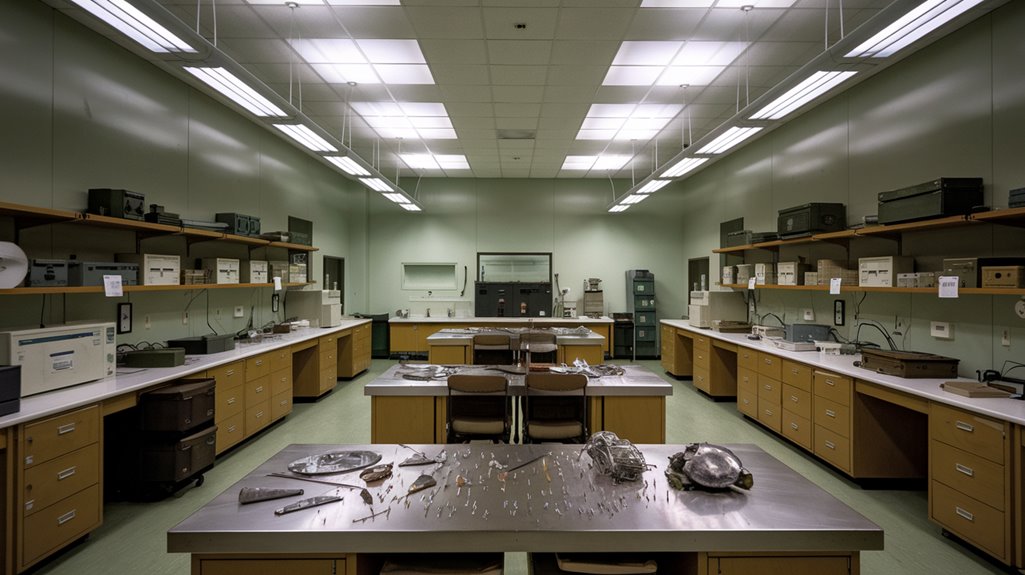
Nearly five decades after the infamous Roswell incident, the U.S. Air Force launched a thorough investigation in 1994, responding to a GAO audit requested by Representative Steven H. Schiff.
Using advanced investigative techniques, they scoured archives and interviewed surviving witnesses to uncover the truth.
The investigation revealed vital findings that shaped public perception:
- Project Mogul, a classified Cold War initiative to detect Soviet nuclear tests, was identified as the likely source of the debris.
- Extensive searches of military records showed no evidence of alien materials or a government cover-up.
- Interviews with original witnesses and Project Mogul personnel supported the balloon theory.
- The Air Force published their conclusions in "The Roswell Report: Fact vs. Fiction."
Despite the thorough investigation and declassification of documents, many UFO enthusiasts continued to challenge the official explanation.
Legacy and Impact: How Project Mogul Shaped Modern History
Though initially shrouded in secrecy, Project Mogul's technological breakthroughs have left an indelible mark on modern surveillance and atmospheric research.
Charles B. Moore directed the groundbreaking missions that would forever change aerial surveillance capabilities.
The project's focus on long-range detection became paramount as U.S. officials sought reliable methods to monitor Soviet nuclear activities.
You'll find its influence in today's satellite monitoring systems and high-altitude reconnaissance platforms, which evolved from Mogul's pioneering work in surveillance technology.
The project's contributions to atmospheric science have proven equally significant.
Through its missions, scientists gained vital insights into high-altitude wind patterns and discovered the atmospheric "sound channel," revolutionizing our understanding of sound propagation.
You can trace Mogul's legacy in current weather forecasting models and balloon technology developments.
Beyond its technical achievements, the project has shaped cultural history, offering a scientific explanation for the Roswell incident while highlighting the complexities of investigating classified Cold War operations.

